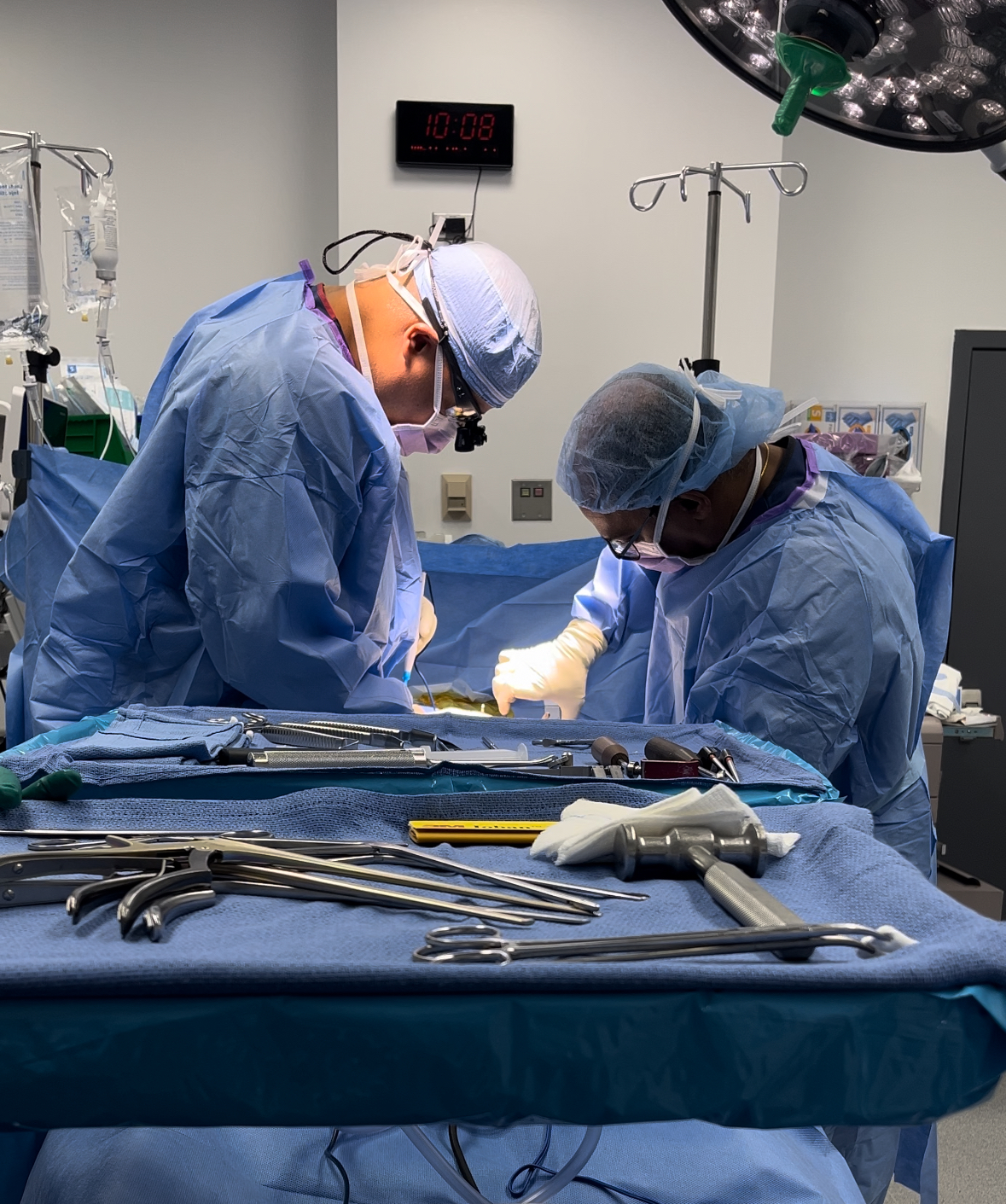
Back pain is one of the most common medical complaints, impacting millions of people worldwide. For those suffering from chronic conditions such as herniated discs, spinal stenosis, or degenerative disc disease, traditional spine surgery was once the primary option for relief. However, it often required long recovery periods, significant discomfort, and extensive scarring. Enter minimally invasive spine surgery, a game-changing approach that is revolutionizing spinal care.

What Is Minimally Invasive Spine Surgery?
Minimally invasive spine surgery (MISS) is a cutting-edge medical procedure designed to address spinal issues with minimal disruption to surrounding tissues. Unlike traditional open surgery, which involves large incisions and significant muscle retraction, minimally invasive techniques use small incisions, specialized tools, and advanced imaging technology. This approach minimizes damage to muscles and soft tissues, leading to faster recovery and reduced postoperative pain.
MISS can be used to treat a variety of spinal conditions, including:
- Herniated discs
- Spinal stenosis
- Scoliosis
- Spinal fractures
- Degenerative disc disease
- Tumors
With the growing advancements in medical technology, minimally invasive spine surgery has become an increasingly popular choice for patients and surgeons alike.
Key Benefits of Minimally Invasive Spine Surgery
- Shorter Recovery Time
One of the most significant advantages of minimally invasive spine surgery is the shorter recovery period. Traditional spine surgery often requires weeks, if not months, for patients to regain mobility and resume normal activities. In contrast, patients undergoing MISS can often return to work and daily routines within days or weeks, depending on the procedure.
By minimizing tissue damage, the healing process is accelerated, and patients experience less downtime. For those with demanding schedules or active lifestyles, this reduced recovery time is invaluable.
- Reduced Pain and Discomfort
Traditional open spine surgeries often result in significant postoperative pain due to the extensive muscle and tissue disruption involved. In contrast, minimally invasive spine surgery minimizes trauma to the surrounding tissues, resulting in less pain during recovery.
Many patients undergoing MISS report needing fewer pain medications after surgery, which can also reduce the risks associated with prolonged use of opioids or other pain management drugs.
- Smaller Incisions and Reduced Scarring
MISS requires incisions as small as a few millimeters, often just large enough to accommodate the specialized surgical instruments or endoscope. These small incisions not only reduce visible scarring but also lower the risk of infection, a common concern with larger surgical wounds.
For many patients, especially younger individuals or those concerned with aesthetics, the reduced scarring from minimally invasive spine surgery is a significant benefit.
- Lower Risk of Complications
Minimally invasive techniques carry a lower risk of complications compared to traditional open surgery. The smaller incisions and less invasive nature of the procedure reduce the likelihood of infection, excessive blood loss, and other surgical complications.
Additionally, by preserving muscle and soft tissue integrity, patients are less likely to experience postoperative muscle weakness or chronic pain associated with extensive tissue damage.
- Outpatient Surgery Options
In many cases, minimally invasive spine surgery can be performed as an outpatient procedure. This means patients can return home the same day as their surgery, eliminating the need for lengthy hospital stays. Outpatient procedures are not only more convenient for patients but also reduce overall healthcare costs and the potential for hospital-acquired infections.
- Precise and Effective Treatment
MISS relies on advanced imaging technologies, such as fluoroscopy and endoscopy, which provide surgeons with a clear view of the surgical site. These tools enhance surgical precision, allowing for targeted treatment of specific spinal conditions while sparing healthy tissues.
This precision often results in more effective outcomes and a lower likelihood of requiring additional surgeries in the future.
Who Is a Candidate for Minimally Invasive Spine Surgery?
Not every patient is a candidate for minimally invasive spine surgery, as the suitability of this approach depends on the specific condition and its severity. However, many patients suffering from conditions like herniated discs, spinal stenosis, or localized spinal instability can benefit from this advanced surgical technique.
Before recommending MISS, surgeons typically perform a thorough evaluation, including imaging studies like MRI or CT scans, to determine whether the procedure is the best option for the patient.
Real-Life Success Stories
Patients who have undergone minimally invasive spine surgery often report life-changing results. Many describe a significant reduction in pain, improved mobility, and a quicker return to their favorite activities. For instance:
- A 45-year-old office worker with a herniated disc was able to return to work just two weeks after surgery, compared to the typical six-to-eight-week recovery period for traditional surgery.
- A 60-year-old avid hiker regained the ability to hit the trails within a month of undergoing MISS for spinal stenosis, enjoying a pain-free lifestyle once again.
These stories highlight the transformative potential of minimally invasive spine surgery for individuals of all ages.
Why Choose Minimally Invasive Spine Surgery?
As advancements in surgical techniques and technology continue to evolve, minimally invasive spine surgery has become a preferred option for addressing spinal conditions. Its numerous benefits, including shorter recovery times, reduced pain, and smaller scars, make it an attractive alternative to traditional surgery.
If you or a loved one is struggling with chronic back pain or a spinal condition, consult a specialist to determine whether minimally invasive spine surgery is the right choice. With its proven track record of success, it’s no wonder that this approach is helping patients say goodbye to long recoveries and embrace a faster, more comfortable path to healing.
In conclusion, minimally invasive spine surgery represents a significant leap forward in spinal care. By leveraging advanced technology and surgical precision, this approach provides patients with a safer, more efficient alternative to traditional open surgery. With benefits like shorter recovery times, reduced pain, and smaller scars, it’s no surprise that more individuals are turning to MISS to regain their quality of life.






